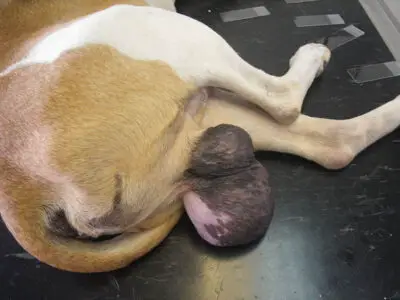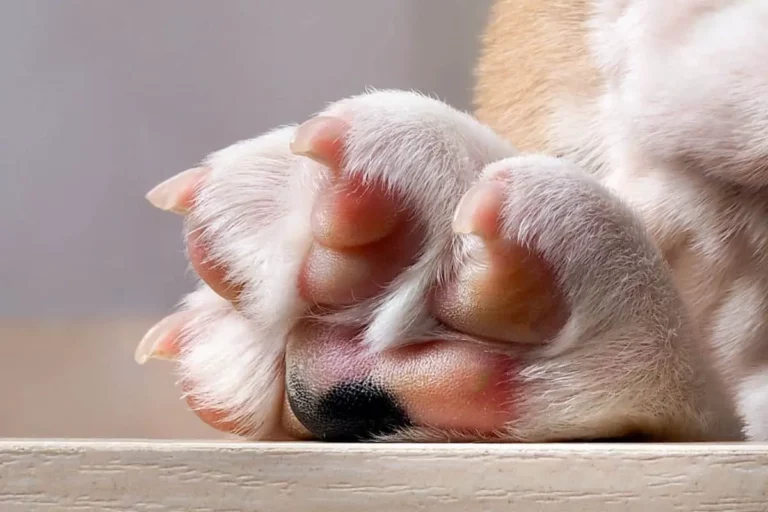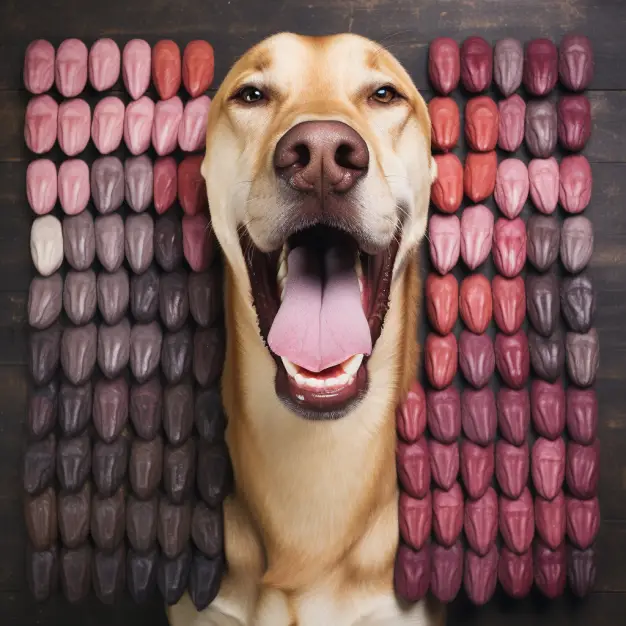Why Are My Dog’s Balls Black? [4 Reasons & What To Do]
One common yet puzzling question that many dog owners find themselves asking is, “Why are my dog’s balls black?” This query may arise due to a sudden change in color or appearance, leading to concerns and uncertainties.
This blog post aims to shed light on the various reasons that might explain this phenomenon, exploring everything from natural pigmentation to potential health concerns.
By reading this comprehensive guide, dog owners will be able to understand the underlying factors and know when to seek professional veterinary help if needed.
Whether a natural occurrence or a sign of an underlying issue, we’ll delve into the answers you need to keep your furry friend happy and healthy.
Key Takeaways:
- Color Changes: A dog’s testicles may change color for various reasons, including natural pigmentation, age, infections, or other underlying health issues.
- Seek Professional Advice: It’s crucial to consult with a vet if the color change is accompanied by other symptoms like swelling, discomfort, or peeling.
- Neutering Effects: Post-neutering color changes may occur, usually returning to normal over time.
- Proper Care and Hygiene: Regular grooming and examination can help in the early detection of any potential issues.
Short Answer: The black coloration of a dog’s testicles might simply be a natural pigmentation or could be indicative of an underlying health condition. Variations in color such as black and red, black and pink, or black and peeling might signify different causes. Understanding the precise cause requires close observation of other accompanying symptoms, and when in doubt, professional veterinary consultation is the best course of action.
4 Common Reasons for Blackening Testicles in Dogs
The blackening of a dog’s testicles can be alarming for pet owners, but understanding the underlying causes can provide valuable insight and guide appropriate responses. Here’s a detailed look at some of the common reasons:
1. Hyperpigmentation
Definition and Description
Hyperpigmentation is a common condition where the skin becomes darker in color than the normal surrounding skin. This darkening occurs when an excess of melanin, the brown pigment that produces normal skin color, forms deposits in the skin.
Causes and Treatments
The causes of hyperpigmentation can vary, from genetic factors to external influences like sun exposure, injury, or skin irritation. Treatment may involve addressing underlying health issues or applying topical creams that lighten the affected area.
2. Infection and Inflammation
Specific Infections Leading to Discoloration
Bacterial or fungal infections can lead to inflammation and discoloration in the testicular area. Specific infections may include:
- Yeast infections
- Bacterial skin infections (pyoderma)
- Parasitic infections like mites or fleas
Treatment Methods
Treatment typically includes antibiotics or antifungal medications, depending on the type of infection. Keeping the area clean and dry can also help in healing.
3. Hormonal Changes
How Hormones Can Affect the Color
Hormonal imbalances can lead to changes in skin color, including the testicular area. Conditions like hypothyroidism may contribute to this change.
Possible Medical Interventions
Addressing the underlying hormonal imbalance, possibly with medication or dietary changes, can correct the discoloration.
4. Why Are My Dog’s Balls Black After Neuter?
Post-neuter Effects on Color
After neutering, some discoloration may occur due to bruising, changes in blood flow, or reactions to surgical materials.
Remedies and Prevention
Monitoring the healing process, following post-operative care instructions, and consulting with your veterinarian if discoloration persists or worsens can help in addressing this issue.
Understanding the why are my dog’s balls black question involves recognizing these common reasons. A proper diagnosis and tailored treatment plan will ensure your pet remains comfortable and healthy.
In any case, if you observe a sudden change in color, it’s wise to consult a veterinarian, as early intervention can often lead to a more positive outcome.

Specific Conditions and Concerns
Various specific conditions can cause a dog’s testicles to appear black or undergo changes in color. Below are detailed insights into each condition:
Why Are My Dog’s Balls Black and Peeling?
This could be due to dry skin, allergic reactions, or an underlying skin condition like dermatitis. Proper moisturization and consulting with a veterinarian for potential medical treatments can be helpful.
Why Are My Dog’s Balls Black and Red?
Redness accompanied by blackening might signal an infection or inflammation. It might also be related to chafing or irritation from grooming products. A veterinarian’s examination is advised to determine the cause and appropriate treatment.
Why Are My Dog’s Balls Black and Pink?
A mix of black and pink could signify a reaction to a particular substance, a healing wound, or a mild irritation. Understanding the root cause may require a professional evaluation.
Why Are My Dog’s Balls So Black?
If the testicles appear unusually dark, this might be related to excessive pigmentation, known as hyperpigmentation. It can also be a sign of a more serious underlying issue that warrants veterinary attention.
Why Are My Dog’s Balls Purple and Black?
Purple discoloration might indicate a circulation issue or a hematoma (a localized collection of blood outside of blood vessels). Immediate veterinary care might be necessary to assess and address this situation.
Why Are My Dog’s Balls Half Black?
A distinct change in color on only part of the testicles could relate to localized irritation, injury, or infection. Examination by a veterinary professional is typically necessary to diagnose and treat the cause.
Is It Normal for Dogs’ Balls to Be Black?
In some dogs, a darkening of the testicles may be normal and related to breed, genetics, or age. However, sudden changes should be monitored and potentially evaluated by a veterinarian.
Why Is the Skin on My Dog’s Balls Black?
The skin’s blackening may be due to hyperpigmentation, chronic inflammation, or an underlying health issue like Cushing’s disease. A comprehensive veterinary examination can pinpoint the cause and guide appropriate care.
Each of these specific situations could have unique underlying causes and treatments. Regular monitoring and awareness of changes in your dog’s appearance can help in early detection and effective management.
In all cases, consulting with a veterinarian ensures that the pet receives appropriate care tailored to the specific condition.
When to Worry
Understanding when a change in your dog’s testicles may be a sign of a serious underlying issue is crucial for timely intervention and proper care. Here’s how to differentiate between natural changes and causes for concern:
Indicators of Serious Underlying Health Issues:
- Persistent Changes: If the discoloration remains consistent and doesn’t go away with time, it may indicate a chronic issue.
- Swelling or Pain: Should the testicles become swollen or tender to the touch, this may be a sign of infection or another medical condition.
- Unusual Odor or Discharge: Any foul-smelling odors or abnormal discharge warrants immediate veterinary attention.
- Behavioral Changes: If your dog shows signs of discomfort, such as excessive licking or changes in urination habits, these might be red flags.
- Rapid Onset of Symptoms: Sudden and severe changes in appearance or texture can be indicative of a serious problem, and immediate veterinary care may be necessary.
The Difference Between Natural Changes and Causes for Concern:
- Natural Changes: Mild darkening or changes that coincide with aging, breed-specific traits, or known harmless conditions might not be a concern. However, ongoing monitoring is wise.
- Causes for Concern: Any sudden, extreme, or unexplained changes in color, texture, or size should be investigated by a veterinarian. These could be symptoms of underlying health issues that require professional medical intervention.
While some changes might be harmless and related to natural aging or breed characteristics, others might be indicative of serious underlying problems. Regular checks and an awareness of what’s normal for your pet can help you detect any unusual changes early.
Always consult with a veterinary professional if you’re uncertain or concerned about any alterations in your dog’s testicles, as prompt medical care can make all the difference in your pet’s well-being.
Examination and Diagnosis
When it comes to the blackening of your dog’s testicles, determining the underlying cause is essential for proper treatment. Here’s what you need to know about the examination and diagnosis process:
Importance of Vet Examination:
Veterinary examination is crucial in these situations. A professional vet has the knowledge and tools to properly diagnose and treat the condition. They will:
- Physical Inspection: Assess the color, texture, and any other unusual characteristics of the testicles.
- Medical History Evaluation: Consider breed, age, past health issues, and other factors that might contribute to the blackening.
- Specific Testing: Depending on the initial assessment, recommend specialized tests to determine the underlying cause.
The Role of Imaging and Laboratory Tests:
Laboratory and imaging tests play a vital role in diagnosis:
- Blood Tests: These can identify hormonal imbalances or infections that might be causing the discoloration.
- Ultrasound: This imaging method can give a detailed view of the testicular structure, helping identify tumors, cysts, or other abnormalities.
- Biopsy: In some cases, a tissue sample might be taken to rule out malignancies or other severe conditions.
- Urinalysis: Checking the urine can provide clues to infections or systemic issues.
DIY Inspection and When It’s Applicable:
While veterinary care is the best way to diagnose and treat medical issues, regular home inspections can help you keep track of any changes in your dog’s testicles. Here’s when DIY inspection is applicable:
- Routine Checks: Regularly checking your dog as part of grooming can help you notice changes early.
- Post-Surgery Monitoring: If your dog has been neutered or has had surgery, keeping an eye on recovery is wise.
- Consultation with a Vet: If you notice anything unusual, consult with a veterinarian immediately, as DIY inspections are no substitute for professional medical evaluation and care.
In summary, while DIY inspections are useful for ongoing monitoring, a veterinarian’s expertise is crucial for proper diagnosis and treatment. Regular check-ups and prompt attention to any unusual changes can help ensure your dog’s health and well-being.
If you notice any signs of blackening, it’s essential to consult with a vet to determine the underlying cause and the appropriate course of treatment.
Treatment and Management
When dealing with the blackening of your dog’s testicles, the treatment and management approach will vary based on the underlying cause. Here’s a guide to the different strategies that may be employed:
Various Treatment Methods Depending on the Cause:
The specific treatment depends on the diagnosis. Here are some common approaches:
- For Infections and Inflammation: Antibiotics, antifungals, or anti-inflammatory medications might be prescribed.
- For Hyperpigmentation: Topical treatments or dietary supplements to address skin health might be recommended.
- For Hormonal Imbalances: Medications to balance hormones, or addressing underlying health conditions causing the imbalance.
- For Tumors or Growths: Surgery or other medical interventions may be required to remove abnormal tissue.
Home Care and Prevention Strategies:
Proper home care is essential to support healing and prevent future issues:
- Regular Cleaning: Keeping the area clean can prevent infections.
- Diet and Supplements: Providing a healthy diet rich in vitamins and minerals can support overall skin health.
- Avoiding Irritants: Keeping away from harsh chemicals or irritants that may cause skin reactions.
- Monitoring: Regular inspection to detect any changes early and seek veterinary care if needed.
Veterinary Interventions and Surgeries if Needed:
In some cases, more intensive veterinary care might be required:
- Surgical Removal: If there’s a tumor or abnormal growth, surgery may be necessary.
- Specialized Medications: Prescriptions tailored to your dog’s specific condition.
- Follow-up Care: Regular follow-up appointments to monitor progress and adjust treatment as needed.
The treatment and management of blackening in a dog’s testicles require a comprehensive approach that includes proper diagnosis, targeted treatments, and careful home care. The collaboration between pet owners and veterinarians is vital to successfully address the problem.
Whether it’s applying prescribed ointments or keeping a watchful eye on changes, your active involvement in your pet’s care can make a significant difference in their recovery and ongoing well-being.
It is essential to follow the guidance of your veterinary professional and engage in responsible home care practices to ensure the best outcome for your furry friend.
Myths and Misconceptions
When it comes to the blackening of a dog’s testicles, various myths and misconceptions can lead to unnecessary panic or, conversely, a lack of concern. Addressing these common misunderstandings and presenting the facts is essential for pet owners to approach the issue with knowledge and understanding.
Myth 1: Blackening Always Indicates a Severe Health Problem
Fact:
While a change in color can sometimes indicate a medical issue, it’s not always a sign of something serious. It could be a normal pigment change or something that needs minimal treatment.
Myth 2: Home Remedies Can Cure Any Discoloration
Fact:
While some home remedies might alleviate symptoms, it’s essential to consult with a veterinarian to diagnose the underlying cause accurately. Wrong treatments might aggravate the problem.
Myth 3: Neutering Always Causes Blackening of the Testicles
Fact:
Though some color changes may occur after neutering, it is not a universal occurrence. Changes should be monitored, but they are not always a cause for concern.
Myth 4: It’s Normal for All Dogs to Have Black Testicles
Fact:
While some dogs may naturally have darker pigmentation in this area, sudden changes or uniform black coloration might indicate an underlying condition.
Myth 5: Blackening is Always Related to Sexual Maturity
Fact:
While hormonal changes related to sexual maturity might affect pigmentation, they are not the sole reason for blackening. Other factors should be considered.
Myth 6: You Can Ignore Blackening If There’s No Other Symptom
Fact:
Even if the blackening doesn’t seem to affect your dog, it’s wise to get a professional opinion. Ignoring it might lead to undiagnosed and untreated underlying health issues.
Understanding the facts and dismissing the myths surrounding the blackening of a dog’s testicles will allow pet owners to approach the situation with clarity and confidence. It’s crucial to rely on professional veterinary guidance rather than assumptions or misinformation found online.
Recognizing the truth behind these misconceptions helps ensure that your pet receives the appropriate care and attention needed to maintain their health and well-being.
Related Concerns and General Care
A dog’s reproductive system and the general genital area require regular attention and care. Beyond the specific concern of blackening testicles, there are several other common issues that may arise, as well as general care tips that every dog owner should be aware of.
Other Common Issues with the Reproductive System in Dogs
1. Testicular Tumors
These are among the most common issues and should be addressed promptly by a veterinarian.
2. Prostatitis
Inflammation of the prostate can cause various symptoms and requires medical intervention.
3. Urinary Tract Infections
Frequent urination, blood in the urine, or discomfort might indicate a UTI, which requires treatment.
General Hygiene and Care Tips for the Area
Maintaining good hygiene can prevent many issues related to the genital area. Here’s what you can do:
1. Regular Inspection
Regularly check your dog’s genital area for any unusual changes, including swelling, lumps, or color changes.
2. Gentle Cleaning
Keep the area clean by using mild dog-friendly soaps and water. Avoid human products that might irritate the skin.
3. Neutering (if applicable)
Consider discussing neutering with your vet, as it can prevent some issues related to the reproductive system.
4. Avoid Over-Grooming
Over-grooming can lead to irritation and other skin problems. Always groom according to the breed’s specific needs.
5. Consult Your Vet for Regular Check-ups
Regular veterinary check-ups can catch potential issues early and ensure that your dog’s reproductive system remains healthy.
Understanding related concerns and practicing good general care can prevent many problems and ensure that your dog stays healthy and comfortable. Regular veterinary check-ups and a vigilant eye can go a long way in keeping your pet happy and well.
If you have any concerns or notice any changes in your dog’s genital area, always consult your veterinarian to determine the best course of action. By taking proper care of your pet’s hygiene, you’re not only promoting their overall well-being but also reducing the likelihood of encountering serious issues in the future.
FAQs: Why Are My Dog’s Balls Black?
Here are some frequently asked questions regarding the topic of blackening in a dog’s testicles, along with succinct and clear answers:
Why are my dog’s balls getting black?
This could be a result of hyperpigmentation, infections, inflammation, or hormonal changes. A vet examination is recommended to determine the exact cause.
How do I know if my dog has an infection in his balls?
Signs of infection might include swelling, redness, an unpleasant odor, discharge, or your dog constantly licking the area. A vet can diagnose the condition through an examination and tests.
Is there something wrong with my dog’s balls?
Any unusual change in color, size, or texture may indicate a problem. Consulting a vet is the safest way to assess if there is an underlying health issue.
Why are my dog’s balls growing?
Growth in size could indicate a benign issue or a serious health concern such as a tumor. An immediate vet examination is advised.
What does it mean when your dog’s balls turn black?
The blackening of a dog’s testicles can mean various things from a simple skin condition to something more severe. A vet can pinpoint the exact reason.
Why Are My Dog’s Balls Black and Peeling?
This could indicate a skin condition or infection. Moisturizers or veterinary-prescribed ointments may help, but it’s best to consult with a vet.
Why Are My Dog’s Balls Black and Red?
Red and black discoloration might be a sign of inflammation or infection. Immediate veterinary attention is recommended.
Why Are My Dog’s Balls Black and Pink?
This could be due to changes in pigmentation or a skin condition. It might be harmless, but a vet can provide a proper diagnosis.
Why Are My Dog’s Balls So Black?
If the testicles are significantly darker than usual, it might indicate an underlying health problem. Consult your veterinarian for an examination.
Why Are My Dog’s Balls Purple and Black?
This could be a sign of bruising or blood pooling. It requires urgent veterinary attention.
Why Are My Dog’s Balls Half Black?
This might be due to irregular pigmentation or a skin issue. A vet can provide an accurate diagnosis.
Is It Normal for Dogs’ Balls to Be Black?
Some discoloration might be normal for individual dogs, but sudden changes should be investigated by a vet.
Why Is the Skin on My Dog’s Balls Black?
Skin darkening might be due to hyperpigmentation, which can be harmless, or another underlying condition. A veterinary assessment is essential.
Why are my dog’s balls black after neutering?
Post-neuter discoloration is typically temporary and related to bruising. If it persists, consult your vet.
The answers to these questions offer a general guide, but the importance of consulting a veterinarian for a precise diagnosis and proper care cannot be overstated. It ensures the well-being of your pet and provides peace of mind for you.
Final Thoughts
Understanding why your dog’s testicles have turned black can be a perplexing and often alarming situation for pet owners. From harmless pigmentation changes to serious underlying health issues, the reasons can be multifaceted.
The information in this blog post aims to provide guidance and alleviate some of the concerns associated with this condition.
It’s vital to recognize that while some causes for the discoloration might be benign, other situations might require immediate medical intervention. This emphasizes the importance of observing any sudden changes in your dog’s testicles, and when in doubt, always consult a professional veterinarian.
Their expertise will ensure the correct diagnosis and appropriate treatment plan.
In the end, proactive care, routine examinations, and a strong line of communication with your veterinarian will not only assist in understanding why are my dog’s balls black but also contribute to the overall health and well-being of your beloved pet.
References
- What Does It Mean When Your Dog’s Balls Turn Black? – Avid Pup
- What Does It Mean When Your Dog’s Balls Turn Black? – Labrador Loving Souls
- Why My Dog’s Balls Black? – Everything Labradors
Please note that while these references provide valuable insights into the topic of “why are my dog’s balls black,” it is always advisable to consult with a licensed veterinarian for personalized information and professional guidance tailored to your specific situation.






